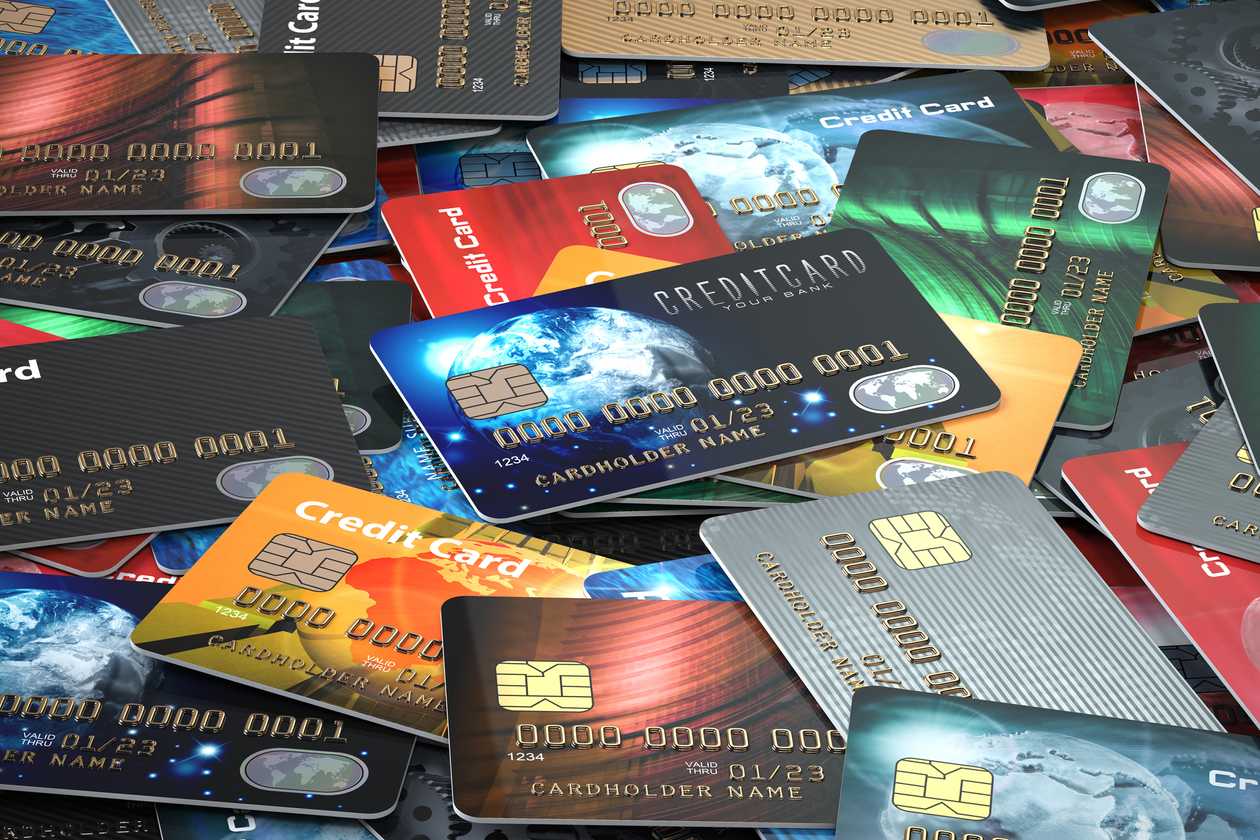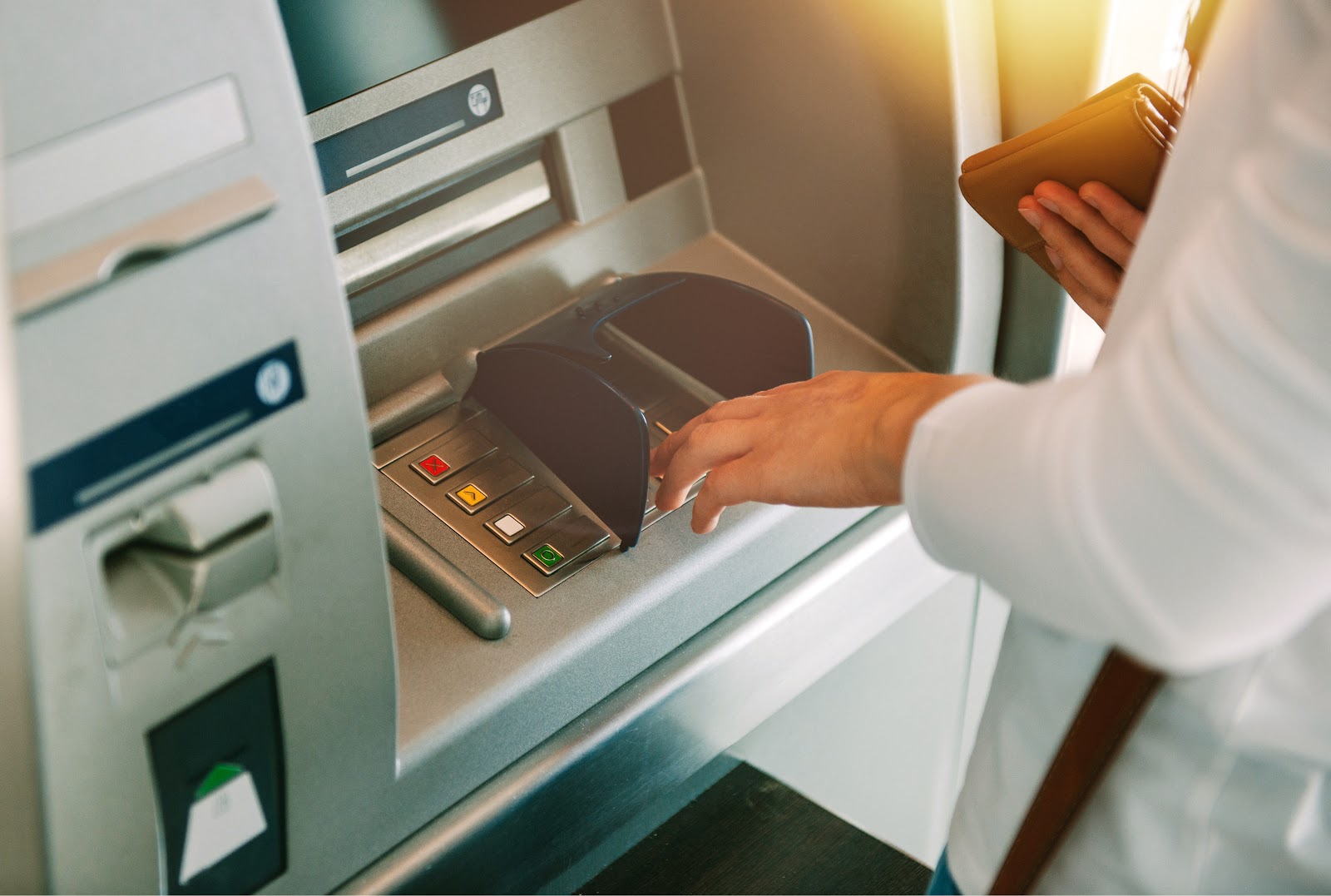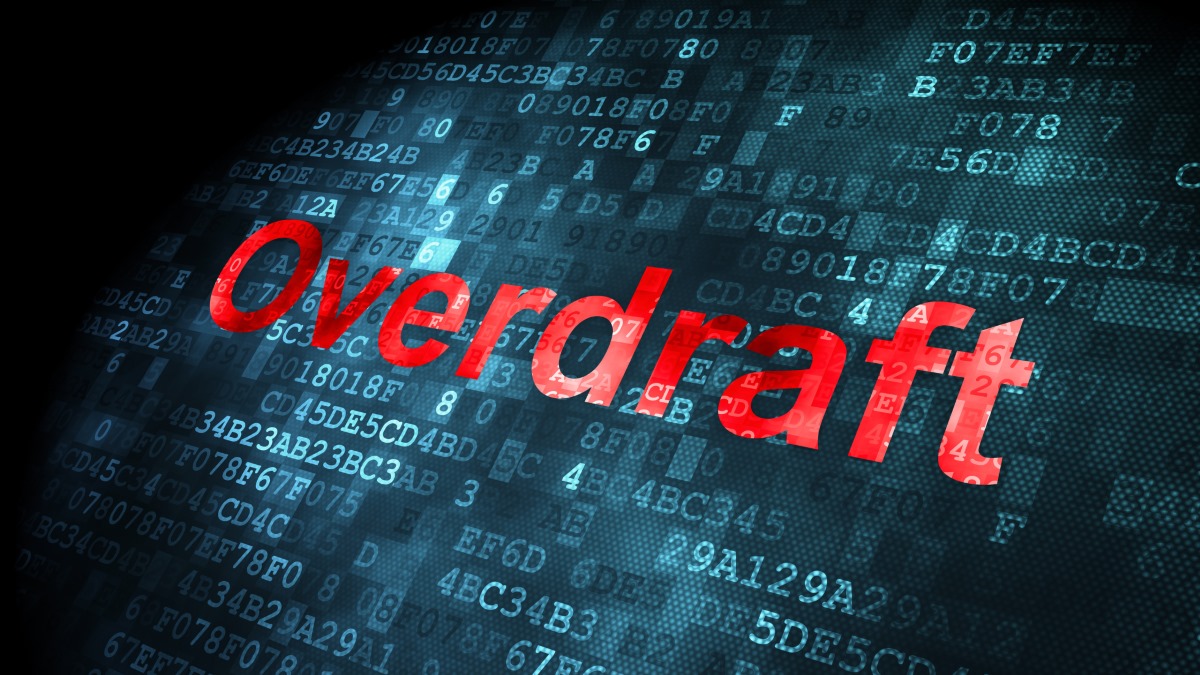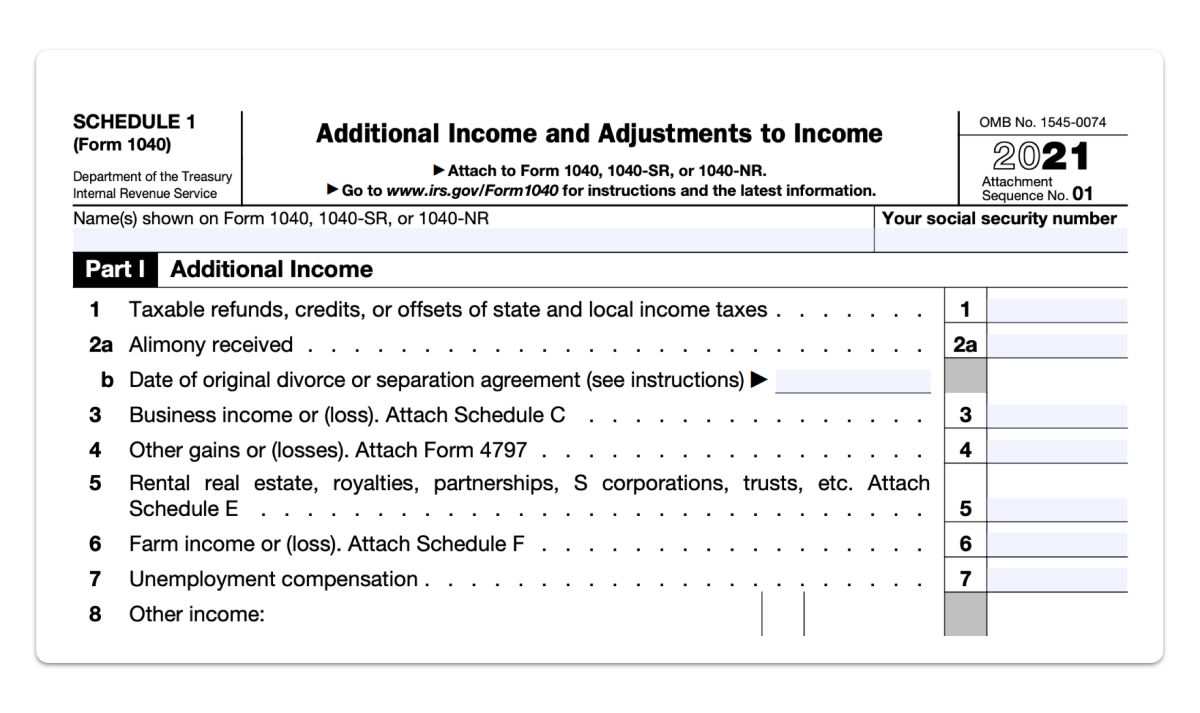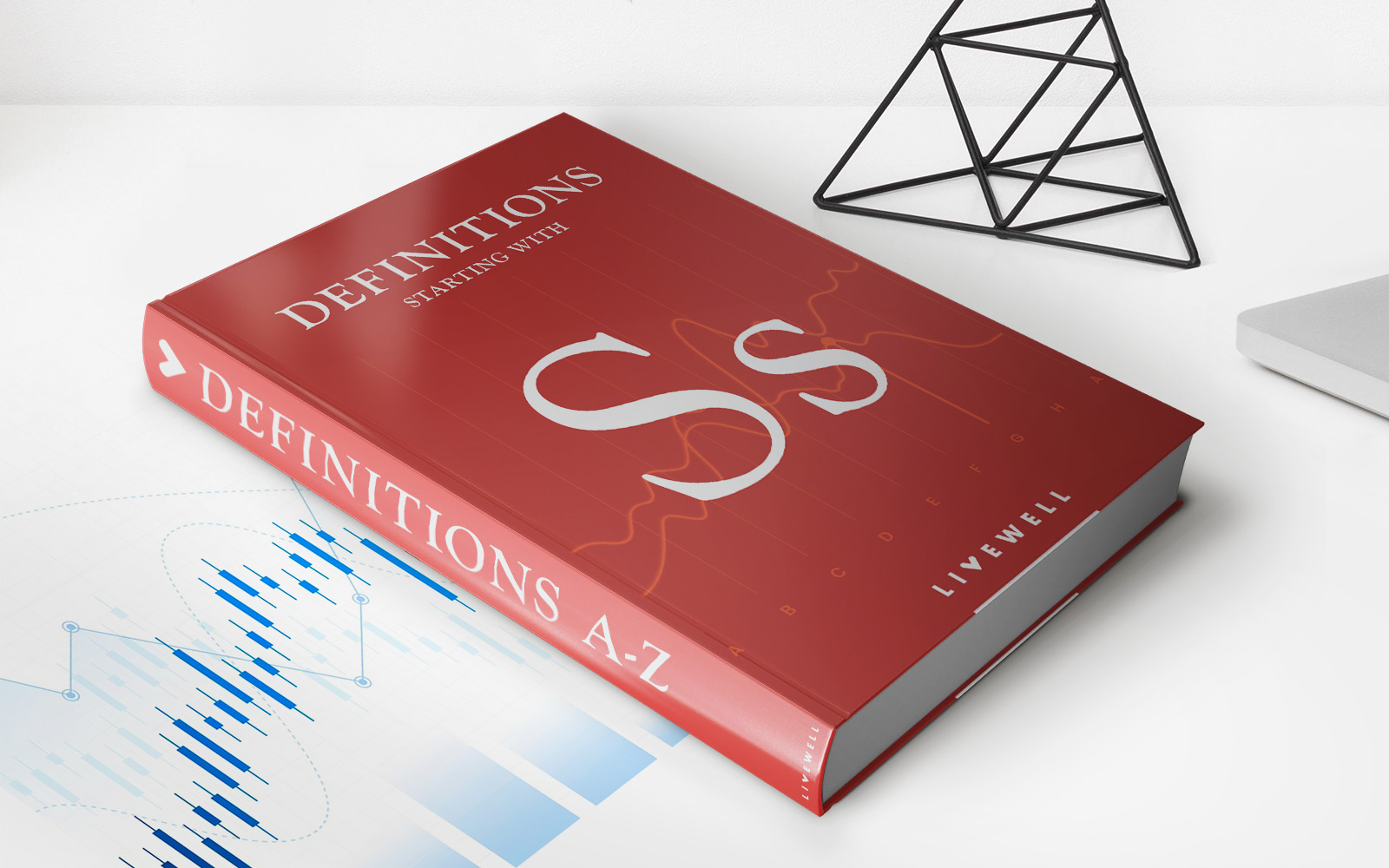

Finance
What Is A Secure Line Of Credit
Modified: March 5, 2024
Find out what a secure line of credit is and how it can benefit your financial situation. Explore finance options for a more secure future.
(Many of the links in this article redirect to a specific reviewed product. Your purchase of these products through affiliate links helps to generate commission for LiveWell, at no extra cost. Learn more)
Table of Contents
- Overview of Secure Line of Credit
- Understanding Line of Credit
- Different Types of Line of Credit
- What Makes a Line of Credit Secure?
- Benefits of a Secure Line of Credit
- Qualifications for a Secure Line of Credit
- How to Apply for a Secure Line of Credit
- Tips for Managing a Secure Line of Credit
- Frequently Asked Questions about Secure Line of Credit
- Conclusion
Overview of Secure Line of Credit
A secure line of credit is a financial tool that provides individuals or businesses with a revolving credit line that is backed by collateral. It allows borrowers to access funds up to a predetermined limit, and interest is only charged on the amount borrowed. This type of credit is suitable for individuals or businesses looking for flexible financing options with lower interest rates compared to other forms of unsecured credit.
With a secure line of credit, borrowers can access funds as needed, and repayments can be made over a specific period of time. The collateral used to secure the credit line can include assets such as real estate, vehicles, or other valuable property.
One of the main advantages of a secure line of credit is that it provides borrowers with a safety net during unexpected financial emergencies or opportunities. Whether it’s covering unexpected expenses, investing in business growth, or funding home renovations, a secure line of credit offers the flexibility and convenience to access funds quickly.
Furthermore, the interest rates for a secure line of credit are generally lower compared to other forms of credit, such as personal loans or credit cards. This is because the collateral serves as a guarantee to the lender, reducing the risk associated with the loan. As a result, borrowers can save money on interest payments and potentially use the funds for other purposes.
In addition to the lower interest rates, a secure line of credit offers borrowers the ability to manage their cash flow effectively. Instead of taking out a lump sum loan, borrowers can draw funds as needed, which can help with budgeting and avoiding unnecessary interest charges. This flexibility allows for greater control over finances and can be particularly beneficial for businesses that experience seasonal fluctuations or irregular cash flow.
It’s important to note that a secure line of credit should be used responsibly. While it provides access to funds, borrowers must ensure timely repayments to maintain a good credit standing and avoid any risks associated with defaulting on the loan.
In summary, a secure line of credit is a versatile financial product that offers borrowers the convenience of accessing funds as needed, lower interest rates, and increased flexibility in managing cash flow. Whether it’s for personal or business purposes, a secure line of credit can provide the necessary financial stability and opportunities for growth.
Understanding Line of Credit
A line of credit is a type of loan that allows borrowers to access funds up to a designated credit limit. Unlike a traditional loan where borrowers receive a lump sum upfront, a line of credit provides borrowers with the flexibility to withdraw funds as needed. It is a revolving form of credit, meaning that as the borrower repays the borrowed amount, the credit limit is replenished, providing access to additional funds.
Lines of credit can be both secured and unsecured. A secured line of credit requires the borrower to provide collateral, such as real estate, vehicles, or other assets, as security for the loan. In contrast, an unsecured line of credit does not require collateral but typically comes with higher interest rates due to the increased risk for the lender.
One of the main benefits of a line of credit is its flexibility. Borrowers have the freedom to use the funds for various purposes, whether it’s for personal expenses, home improvements, or business investments. They can make multiple withdrawals and repayments, as long as they stay within the credit limit and make the minimum payments required by the lender.
In addition to flexibility, lines of credit also provide borrowers with the opportunity to save on interest charges. Unlike a traditional loan where interest is charged on the entire loan amount disbursed upfront, with a line of credit, interest is only charged on the borrowed amount. This means that if the borrower only uses a portion of the credit limit, they will only pay interest on that specific amount.
Furthermore, lines of credit offer borrowers the flexibility to choose between making interest-only payments or paying down the principal amount. This can be advantageous for borrowers who want to keep their monthly payments low or prioritize other financial obligations.
It’s important for borrowers to carefully review the terms and conditions of a line of credit before applying. They should have a clear understanding of the interest rate, fees, repayment terms, and any potential penalties for late payments or exceeding the credit limit.
In summary, a line of credit is a versatile financial tool that provides borrowers with flexibility in accessing funds as needed. Whether it’s for personal or business purposes, understanding the basics of a line of credit can help individuals make informed decisions about their borrowing needs and financial goals.
Different Types of Line of Credit
Lines of credit come in various forms, each tailored to specific borrowing needs and financial situations. Understanding the different types of lines of credit can help individuals choose the option that aligns with their objectives. Here are some common types of lines of credit:
- Personal Line of Credit: This type of line of credit is designed for personal use. It provides individuals with access to funds to cover various expenses, such as home improvements, education costs, or unexpected emergencies. Personal lines of credit are typically unsecured, meaning they do not require collateral. Interest rates and credit limits may vary based on the borrower’s creditworthiness.
- Business Line of Credit: Business lines of credit are specifically designed to meet the financing needs of businesses. Whether it’s for managing cash flow, purchasing inventory, or funding short-term projects, a business line of credit provides the necessary flexibility. These lines of credit can be secured or unsecured, depending on the lender’s requirements and the business’s financial situation. The interest rates, credit limits, and repayment terms may vary based on factors such as the business’s credit history, revenue, and industry.
- Home Equity Line of Credit (HELOC): A HELOC is a line of credit that uses the borrower’s home equity as collateral. Homeowners can access funds up to a certain percentage of their home’s appraised value, minus the outstanding mortgage balance. HELOCs are commonly used for home renovations, debt consolidation, or other major expenses. The interest rates for HELOCs are typically lower compared to unsecured lines of credit, and the interest paid may be tax-deductible in some cases (consult a tax advisor for specific details).
- Secured Line of Credit: A secured line of credit requires borrowers to provide collateral, such as real estate, vehicles, or other valuable assets. By securing the line of credit, borrowers may be able to access larger credit limits and lower interest rates compared to unsecured lines of credit. The collateral serves as a guarantee for the lender, reducing the risk and potentially providing more favorable terms for the borrower.
- Unsecured Line of Credit: Unsecured lines of credit do not require collateral. They are based primarily on the borrower’s creditworthiness and ability to repay. Interest rates for unsecured lines of credit may be higher compared to secured lines of credit, but they offer the advantage of not putting specific assets at risk. This type of line of credit is typically used for personal expenses or smaller business needs.
It’s important for individuals and businesses to carefully consider their specific needs and financial circumstances when choosing a type of line of credit. Consulting with a financial advisor or speaking with lenders can provide valuable insights and guidance in selecting the most suitable option.
What Makes a Line of Credit Secure?
A secure line of credit is distinguished by the presence of collateral that serves as protection for the lender in case the borrower defaults on the loan. This collateral can be in the form of assets such as real estate, vehicles, or other valuable property. The inclusion of collateral mitigates the lender’s risk and provides additional security, resulting in certain advantages for both the borrower and the lender.
One of the primary benefits of collateral in a secure line of credit is the ability to access larger credit limits. Because the line of credit is backed by valuable assets, lenders are generally more willing to offer higher credit limits compared to unsecured lines of credit. This allows borrowers to meet their financing needs more effectively, whether it’s for personal expenses or business investments.
In addition to larger credit limits, secure lines of credit often come with lower interest rates. The presence of collateral reduces the lender’s risk, making the loan less risky overall. As a result, borrowers can enjoy more favorable interest rates, ultimately saving money on interest payments over the course of the loan.
Moreover, secure lines of credit provide borrowers with the opportunity to improve their credit profiles. By consistently making timely payments and managing the credit responsibly, borrowers can establish a positive credit history. This can have a positive impact on their future borrowing capabilities, enabling them to qualify for more favorable terms and conditions in the future.
For lenders, the inclusion of collateral in a line of credit acts as a safeguard against potential losses. If a borrower defaults on the loan, the lender has the right to seize and sell the collateral to recover any outstanding balance. This reduces the financial risk associated with lending and provides lenders with a layer of protection.
It’s important to note that while secure lines of credit offer certain advantages, borrowers must also exercise caution. Failing to meet the repayment obligations can result in the loss of the collateral, leading to serious financial consequences. Therefore, borrowers should carefully assess their ability to repay the loan before entering into any secure line of credit agreement.
In summary, the presence of collateral makes a line of credit secure by providing protection for the lender in case the borrower defaults. This added security allows borrowers to access larger credit limits, benefit from lower interest rates, and potentially improve their credit profiles. However, borrowers should always approach secure lines of credit with responsibility and ensure they have the means to meet the repayment obligations to avoid any potential risks associated with the collateral.
Benefits of a Secure Line of Credit
A secure line of credit offers several advantages for borrowers, including flexibility, lower interest rates, and the ability to leverage valuable assets. Whether it’s for personal or business use, understanding the benefits of a secure line of credit can help individuals make informed borrowing decisions. Here are some key benefits:
- Flexibility: With a secure line of credit, borrowers have the flexibility to access funds as needed. They can make multiple withdrawals, up to the predetermined credit limit, without having to reapply for a new loan. This flexibility is particularly beneficial for situations where cash flow needs fluctuate or unexpected expenses arise. Borrowers can use the funds for various purposes, whether it’s for personal expenses, home improvements, or business investments.
- Lower Interest Rates: Secure lines of credit often come with lower interest rates compared to unsecured lines of credit or credit cards. The presence of collateral reduces the lender’s risk, enabling them to offer more favorable interest rates. Lower interest rates mean that borrowers can save money on interest payments over the course of the loan, resulting in potential long-term savings.
- Access to Larger Credit Limits: Collateral allows borrowers to access larger credit limits compared to unsecured lines of credit. The value of the collateral serves as a guarantee for the lender, which decreases the risk associated with lending. This increased borrowing capacity provides individuals and businesses with the financial flexibility to meet their needs effectively.
- Potential Tax Benefits: In the case of a home equity line of credit (HELOC), the interest paid on the loan may be tax-deductible in certain situations (consult a tax advisor for specific details). This can provide additional financial benefits and further reduce the cost of borrowing.
- Opportunity to Improve Credit: Responsible handling of a secure line of credit can help borrowers improve their credit profiles. By making timely payments and managing the credit effectively, borrowers can establish a positive credit history. This can have a positive impact on their future borrowing capabilities, enabling them to qualify for more favorable terms and conditions in the future.
It’s important for borrowers to carefully consider their financial situation and borrowing needs before utilizing a secure line of credit. Regular assessments of the collateral’s value, as well as the ability to meet the repayment obligations, are crucial to ensure a positive borrowing experience.
In summary, a secure line of credit offers borrowers flexibility, lower interest rates, and greater borrowing capacity. It can serve as a valuable financial tool for individuals and businesses, helping them meet their financial needs while potentially improving their credit profiles. However, responsible borrowing and careful consideration of the collateral and repayment obligations are essential to fully enjoy the benefits of a secure line of credit.
Qualifications for a Secure Line of Credit
Qualifying for a secure line of credit depends on several factors, including the borrower’s creditworthiness, income stability, and the value of the collateral. Lenders have specific requirements that borrowers must meet to be considered eligible for a secure line of credit. Here are some common qualifications:
- Credit History: Lenders typically assess the borrower’s credit history to determine their creditworthiness. A good credit history, demonstrating a responsible track record of managing credit and making timely payments, can increase the chances of qualifying for a secure line of credit. It is important to have a solid credit score and a clean credit report without any major negative remarks, such as defaults or bankruptcies.
- Income and Expenses: Lenders will also evaluate the borrower’s income and expenses to determine their ability to repay the line of credit. This includes assessing the borrower’s debt-to-income ratio, which compares the total monthly debt payments to the monthly income. A lower debt-to-income ratio is generally seen as more favorable, as it indicates a greater ability to manage debt obligations.
- Collateral Value: The value and type of collateral offered will be assessed by the lender. The collateral must have sufficient value to cover the line of credit in case the borrower defaults. Lenders may require a professional appraisal or assessment of the collateral to determine its worth. Higher-value collateral can increase the likelihood of qualifying for a larger credit limit.
- Financial Stability: Lenders may also consider the overall financial stability of the borrower. This includes factors such as the borrower’s employment history, stability of income sources, and any other outstanding debts or financial obligations. Lenders typically prefer borrowers who demonstrate a stable financial profile to minimize the risk of default.
- Documentation and Application: To apply for a secure line of credit, borrowers will need to provide the necessary documentation, including identification, proof of income, and details regarding the collateral being offered. Lenders may also request additional documentation, such as bank statements or tax returns, to verify financial stability and creditworthiness.
It’s essential for borrowers to carefully review the specific requirements and guidelines provided by the lender before applying for a secure line of credit. Consulting with a financial advisor or speaking directly with the lender can provide valuable insights and guidance throughout the qualification process.
In summary, to qualify for a secure line of credit, borrowers typically need a good credit history, stable income, valuable collateral, and overall financial stability. Meeting these qualifications increases the chances of approval and obtaining more favorable terms and conditions for the line of credit.
How to Apply for a Secure Line of Credit
Applying for a secure line of credit involves a step-by-step process that includes gathering necessary documentation, researching lenders, and submitting an application. Here are the general steps to follow when applying for a secure line of credit:
- Evaluate Your Financial Needs: Determine how much credit you need and the purpose for which you will be using the funds. This will help you determine the borrowing limit and the type of collateral you may need to secure the line of credit.
- Research Lenders: Conduct thorough research to find reputable lenders who offer secure lines of credit. Consider factors such as interest rates, credit limits, repayment terms, and customer reviews. Compare multiple lenders to find the most suitable option for your needs.
- Gather Documentation: Collect the necessary documentation required by the lender. This may include identification, proof of income, bank statements, tax returns, and details of the collateral being offered. Make sure the documentation is accurate and up-to-date.
- Submit an Application: Complete the application form provided by the lender. Be prepared to provide personal and financial information, including employment details, income, and expenses. Ensure that all information is accurate and complete. Submit the application either online, through the lender’s website, or in-person at a branch.
- Provide Collateral Information: If your line of credit requires collateral, you will need to provide details and documentation related to the collateral being offered. This may include property deeds, vehicle registration documents, or other relevant asset information. The lender may require an appraisal or assessment of the collateral’s value.
- Wait for Approval: Once you have submitted your application with all the necessary documentation, you will need to wait for the lender’s decision. The approval process may take a few days or longer, depending on the lender’s internal procedures and the complexity of the application.
- Review and Accept Terms: If your application is approved, carefully review the terms and conditions of the secure line of credit. Pay close attention to interest rates, repayment terms, fees, and any other relevant details. If you agree to the terms, sign the loan agreement and acknowledge your understanding of the terms and conditions.
- Access Funds: Once the secure line of credit is approved and the loan agreement is signed, you can access the funds as needed, up to the approved credit limit. Depending on the lender, you may receive a checkbook, a credit card, or access to online banking facilities to withdraw the funds.
It’s important to remember that the application process may vary slightly depending on the lender’s requirements and procedures. It’s advisable to consult with the lender or seek guidance from a financial advisor if you have any questions or concerns during the application process.
In summary, applying for a secure line of credit involves evaluating your financial needs, researching lenders, gathering documentation, submitting an application, providing collateral information, waiting for approval, reviewing and accepting the terms, and finally accessing the approved funds. Following these steps can help individuals navigate the process smoothly and increase the chances of securing the desired line of credit.
Tips for Managing a Secure Line of Credit
Managing a secure line of credit responsibly is key to making the most of this financial tool while maintaining a healthy financial profile. Here are some essential tips for effectively managing a secure line of credit:
- Create a Budget: Establish a budget to track your income and expenses. This will help you determine how much you can comfortably borrow and repay, ensuring that you don’t overextend yourself financially. Stick to your budget and avoid unnecessary or impulsive spending.
- Monitor Your Credit: Regularly monitor your credit report to ensure it remains accurate and to identify any potential errors or fraudulent activities. By keeping an eye on your credit, you can address any issues promptly and maintain a positive credit history.
- Make Timely Payments: Pay at least the minimum monthly payment on time to maintain a positive payment history. Late payments can negatively impact your credit score and may result in additional fees or penalties from the lender. Consider setting up automatic payments to ensure you never miss a payment.
- Avoid Maxing Out the Credit Limit: While a secure line of credit offers flexibility in accessing funds, it’s important to avoid maxing out the credit limit. Utilizing a large portion of the available credit can negatively impact your credit utilization ratio, which is the amount of credit you’ve used compared to your total credit limit. Aim to keep your credit utilization ratio below 30% to maintain a healthy credit profile.
- Regularly Review Your Statements: Take the time to review your monthly statements carefully. Check for any discrepancies, unauthorized charges, or unexpected fees. If you notice any issues, contact the lender immediately to rectify the situation.
- Avoid Taking on Additional Debt: While a secure line of credit can be a useful financial tool, it’s important to resist the temptation to take on additional debt unnecessarily. Consider your overall financial situation and borrowing capacity before utilizing the line of credit for non-essential expenses. Failing to manage debt wisely can put you at risk of financial strain and potential default.
- Communicate with Your Lender: If you encounter financial difficulties or anticipate challenges in making your payments, proactively reach out to your lender. They may be able to offer assistance or provide alternative solutions, such as adjusting your payment schedule or refinancing the line of credit. It’s always better to communicate and address potential issues early on to work towards a mutually beneficial solution.
By implementing these tips, you can effectively manage your secure line of credit and reap the benefits it offers. Responsible credit management not only helps you maintain financial stability but also enhances your creditworthiness for future borrowing needs.
In summary, managing a secure line of credit requires careful budgeting, making timely payments, avoiding excessive credit utilization, regularly reviewing statements, and effective communication with the lender. By following these tips, you can utilize a secure line of credit responsibly and leverage it to meet your financial needs effectively.
Frequently Asked Questions about Secure Line of Credit
Here are answers to some frequently asked questions about secure lines of credit:
- What is a secure line of credit?
- What are some common types of assets used as collateral for a secure line of credit?
- Is a secure line of credit the same as a home equity line of credit (HELOC)?
- What are the advantages of a secure line of credit compared to other forms of credit?
- Can I use a secure line of credit for personal and business purposes?
- Does a secure line of credit require regular minimum payments?
- Can I use a secure line of credit to consolidate debt?
- Is it possible to increase the credit limit on a secure line of credit?
- What happens if I default on a secure line of credit?
A secure line of credit is a financial tool that provides individuals or businesses with a revolving credit line backed by collateral. It allows borrowers to access funds up to a predetermined limit, with interest charged only on the amount borrowed.
Common types of assets used as collateral for a secure line of credit include real estate properties, vehicles, investment portfolios, or other valuable personal or business assets.
No, a home equity line of credit (HELOC) is a specific type of secure line of credit that uses the borrower’s home equity as collateral. While a HELOC is a form of secured credit, a secure line of credit can have different types of collateral.
Some advantages of a secure line of credit include lower interest rates, access to larger credit limits, greater flexibility in borrowing and repayments, and the potential to improve credit profiles through responsible use of the credit.
Yes, a secure line of credit can be used for both personal and business purposes. Personal lines of credit are typically for individual use, while business lines of credit are tailored for business needs.
Yes, a secure line of credit requires regular minimum payments. Failure to make the minimum payments can result in negative consequences, such as damaging your credit score or potential default on the loan.
Yes, a secure line of credit can be used to consolidate high-interest debt. By utilizing the credit line to pay off multiple debts, borrowers can streamline their debt payments and potentially save money on interest charges.
It may be possible to increase the credit limit on a secure line of credit over time. However, this would require a reassessment of the collateral and the borrower’s creditworthiness by the lender.
If you default on a secure line of credit, the lender has the right to seize and sell the collateral to recover the outstanding balance. It is important to fulfill the repayment obligations to avoid default and protect your collateral.
These are general answers to common questions about secure lines of credit. It’s important to remember that specific terms and conditions may vary depending on the lender and individual circumstances. It’s advisable to consult with lenders or financial advisors to get personalized information and guidance.
In summary, secure lines of credit provide individuals and businesses with a flexible borrowing option backed by collateral. Understanding the basics and frequently asked questions about these credit lines can help borrowers make informed decisions and effectively manage their financial obligations.
Conclusion
A secure line of credit can be a valuable financial tool for individuals and businesses seeking flexible financing options backed by collateral. This type of credit offers numerous benefits, including the ability to access funds as needed, lower interest rates, and larger credit limits. By understanding the qualifications and application process, borrowers can navigate the path to obtaining a secure line of credit successfully.
Proper management of a secure line of credit is crucial to maximize its advantages. This includes creating a budget, making timely payments, monitoring credit usage, and communicating effectively with the lender. Responsible credit management not only ensures the borrower’s financial stability but also assists in maintaining a positive credit history.
While a secure line of credit offers various advantages, it’s essential for borrowers to carefully assess their financial needs, capabilities, and risks. Borrowers should evaluate the value and type of collateral offered, consider their income stability, and review the terms and conditions of the credit line thoroughly.
In conclusion, a secure line of credit can provide borrowers with the necessary financial flexibility, competitive interest rates, and access to larger credit limits. By utilizing this type of credit responsibly and managing it effectively, borrowers can meet their financial objectives while maintaining a positive credit profile. It’s important to approach a secure line of credit with careful consideration, staying mindful of the repayment obligations and the importance of protecting the collateral provided. With proper planning and responsible borrowing, a secure line of credit can be an advantageous financial tool for achieving personal and business goals.

